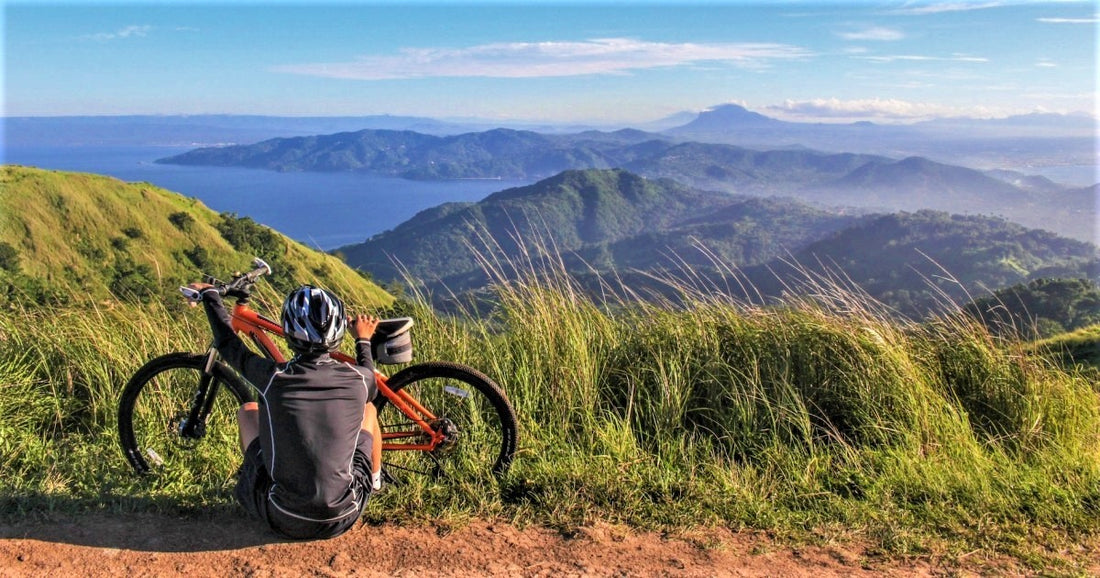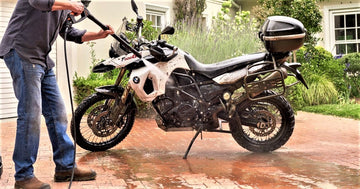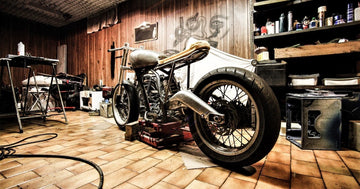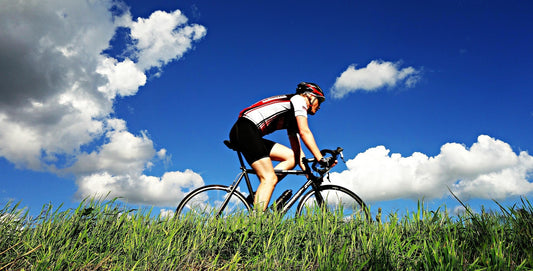Bicycle Maintenance 101: The Everything-You-Need-To-Know Guide to Cycle Care
As a bicycle owner and a cycling enthusiast, it's important to understand that regular maintenance is crucial to ensuring a smooth and safe ride.
With a little bit of care and attention, you can prolong the life of your bike, and avoid costly repairs in the future.
In this comprehensive guide, you will discover all the essential tips and techniques for maintaining your bike like a pro.
Tools and Supplies for Bike Maintenance
Before we dive into the nitty-gritty of bike maintenance, let's start by ensuring you have the right tools and supplies at your disposal.
While you don't need an extensive toolkit, having a few essential items will make your maintenance tasks easier.
Here are the tools and supplies you should consider:
- On-the-bike repair kit: This includes a small multi-tool, spare tube, tire levers, CO2 cartridges, and a valve and/or hand pump.
- Floor pump with a tyre pressure gauge: This allows you to inflate your tyres to the proper pressure, ensuring a smooth and efficient ride.
- Set of Allen wrenches: These are essential for adjusting various components on your bike, such as brakes and derailleurs.
- Adjustable crescent wrench or set of crescent wrenches: These are useful for tightening nuts and bolts on your bike.
- Bike wash supplies: Get yourself some brushes, rags, dish soap, degreaser, and chain lube for cleaning and maintaining your bike.
Having these tools and supplies readily available will make it easier for you to perform basic maintenance tasks and keep your bike in optimal condition.
Getting Started: Basic Bike Setup and Fit
Before you hit the road or trail, it's important to ensure that your bike is properly set up and fits you well. A bike that is not adjusted to your body can lead to discomfort and even injury.
Here are a few key areas to focus on when setting up your bike:
· Saddle Height and Position
One of the most important aspects of bike fit is getting your saddle height right. Improper saddle height can lead to inefficient pedaling and discomfort. To determine the correct saddle height, sit on your bike with your heels on the pedals. Your leg should be fully extended with a slight bend in the knee. Adjust the saddle height accordingly and make sure it feels comfortable when pedaling with the balls of your feet.
In addition to saddle height, you should also consider the fore-aft position of your saddle. This refers to how far forward or backward your saddle is positioned on the seat post. A general guideline is to align the front of your kneecap with the center of the pedal axle when the crank arm is parallel to the ground.
· Handlebar Position and Reach
Proper handlebar position and reach are crucial for maintaining control and comfort while riding. Start by positioning your handlebars at a height that allows you to maintain a relaxed and natural riding posture. Experiment with different handlebar heights until you find the one that suits you best.
Next, consider the reach to the handlebars. You should be able to reach the brake levers and shifters comfortably without straining. If you find yourself reaching too far or having to stretch to reach the controls, you may need to adjust the stem length or handlebar position.
· Brake and Shifter Adjustment
Check that your brakes and shifters are properly adjusted and functioning smoothly. When you squeeze the brake levers, the brake pads should engage the rims or discs evenly and provide sufficient stopping power. If your brakes feel spongy or unresponsive, you may need to adjust the cable tension or brake pads.
Likewise, ensure that your shifters are shifting smoothly and accurately. Take your bike for a test ride and run through all the gears to make sure the chain moves smoothly between the gears without skipping or hesitating. If you encounter any issues, refer to the manufacturer's instructions or seek assistance from a bike shop.
By taking the time to properly set up your bike and ensure a comfortable fit, you will be able to enjoy your rides to the fullest and minimize the risk of discomfort or injury.
Essential Bike Maintenance Tasks
Now that you have your bike properly set up, let's move on to the essential maintenance tasks that will keep your bike in top shape. These tasks should be performed regularly to ensure optimal performance and longevity of your bike's components.
· Keeping Your Tyres Inflated
Proper tyre inflation is crucial for a smooth and efficient ride. Check the recommended tyre pressure indicated on the sidewall of your tires and use a floor pump with a pressure gauge to inflate them to the correct PSI (pounds per square inch). Under-inflated tyres can lead to increased rolling resistance, while over-inflated tyres can affect traction and comfort.
Make it a habit to check your tyre pressure before each ride and adjust as necessary. Tyres naturally lose air over time, so it's important to monitor and maintain the proper pressure regularly. Remember to inflate the tyres slowly and check that the bead of the tyre stays properly seated inside the rim to prevent any mishaps.
· Inspecting and Cleaning Your Tyres
While checking your tyre pressure, take the opportunity to inspect the condition of your tyres. Look for any signs of cracking, dry rot, or excessive wear. Worn-out tyres should be replaced to ensure optimal safety and performance.
Additionally, keeping them clean is important for maintaining traction and preventing premature wear. After riding in muddy or wet conditions, use a brush or sponge to remove any dirt or debris stuck to them. This will help prolong their lifespan and ensure a smoother ride.
· Checking and Adjusting Brakes
Properly functioning brakes are essential for your safety on the road or trail. Regularly inspect your brake pads for wear. Worn brake pads should be replaced promptly to maintain effective braking power. It's important to ensure that the brake pads make even contact with the rim or disc when you squeeze the brake levers. If the pads are misaligned or not contacting the braking surface properly, adjustments may be needed.
To adjust the brake pads, locate the barrel adjuster near the brake lever and make small adjustments until the pads are properly aligned with the rim or disc. If further adjustments are necessary, consult the manufacturer's instructions or seek assistance from a professional bike mechanic.
· Lubricating Your Chain and Drivetrain
The chain and drivetrain are crucial components of your bike that require regular lubrication to function smoothly and prevent excessive wear. Start by cleaning your chain and drivetrain using a degreaser and a brush to remove any dirt or buildup. Once cleaned, apply a thin coat of bike-specific lubricant to the chain, ensuring that it penetrates each link.
Avoid over-lubricating the chain, as excess lubricant can attract dirt and grime, leading to increased wear. After applying the lubricant, wipe off any excess with a clean rag. It's also a good idea to shift through all the gears to ensure that the lubricant spreads evenly across the drivetrain.
· Inspecting and Adjusting Gears
Properly functioning gears are essential for smooth and efficient shifting. Regularly inspect your gears to ensure they are aligned and functioning properly. Look for any signs of bent or damaged derailleur hangers, misaligned gears, or loose cables.
If your gears are not shifting smoothly or if you're experiencing skipping or hesitation, adjustments may be necessary. Consult the manufacturer's instructions or seek assistance from a professional bike mechanic to properly adjust the gears and ensure optimal shifting performance.
· Cleaning and Maintaining the Frame
Keeping your bike frame clean not only enhances its appearance but also helps prevent corrosion and prolongs its lifespan. After each ride, give your bike a thorough cleaning using a bucket of soapy water, a sponge, and a brush. Pay attention to hard-to-reach areas, such as the bottom bracket and rear dropouts, as dirt and debris can accumulate there.
Avoid using high-pressure hoses, as they can force water into sensitive bearing systems and cause damage. Once the bike is clean, dry it thoroughly with a clean rag to prevent moisture from causing rust or corrosion. Lastly, apply a protective layer of wax or bike polish to the frame for added shine and protection.
· Checking and Maintaining the Wheels
Properly maintained wheels are essential for a smooth and safe ride. Regularly inspect your wheels for any signs of damage, such as bent rims or broken spokes. If you notice any issues, it's best to have them addressed by a professional bike mechanic.
Additionally, check that the wheels are true, meaning they spin without wobbling from side to side. If you notice any wobbling, the wheels may need to be trued. While wheel truing requires specialized tools and skills, it's a task best left to a professional bike mechanic to ensure optimal results.
· Inspecting and Maintaining the Suspension (if applicable)
If your bike is equipped with front suspension forks or rear shocks, it's important to regularly inspect and maintain them. Check for any signs of damage, leaks, or worn-out seals. If you notice any issues, it's best to have them addressed by a professional bike mechanic who is experienced in suspension maintenance.
For air-sprung suspension components, pay attention to the recommended air pressure settings and adjust as needed. Regularly clean and lubricate the stanchions of your suspension components to prevent dirt and debris from affecting their performance.
· Checking and Maintaining the Bottom Bracket and Headset
The bottom bracket and headset are critical components that require regular inspection and maintenance. Check for any play or looseness in these areas and address any issues promptly. If you notice any grinding or roughness, it may be a sign that the bearings need to be serviced or replaced.
For threaded bottom brackets, periodically remove and regrease the bearings to ensure smooth operation. For press-fit bottom brackets, follow the manufacturer's guidelines for maintenance and replacement.
· Regular Professional Servicing
While regular maintenance tasks can be performed at home, it's also important to schedule professional servicing for your bike. A professional bike service, ideally performed once a year, can help identify any underlying issues and ensure that your bike is in optimal condition.
During a professional service, a bike mechanic will perform a comprehensive inspection, adjust components as necessary, and address any specific concerns you may have. This will not only help prolong the life of your bike but also provide peace of mind knowing that it has been thoroughly checked by an expert.
Key Takeaways
The performance and long lifespan of your cycle depend upon following a repair and maintenance routine.
Understand the key areas of your bike that will require regular upkeep such as the tyres, chain, brakes, wheels & gears, etc, Learn how to care for them so you can fix them personally when the need arises.
You also need the right tools and supplies to make your maintenance tasks easier. You don’t require an extensive tool kit; having just a few essential tools will go a long way.
Moreover, do not shy away from seeking professional help for issues you can’t fix yourself.
Constant care and maintenance will not only extend the lifespan of your bicycle, it will also enhance your overall cycling performance & experience.
So, give your ride the love & attention it deserves.







